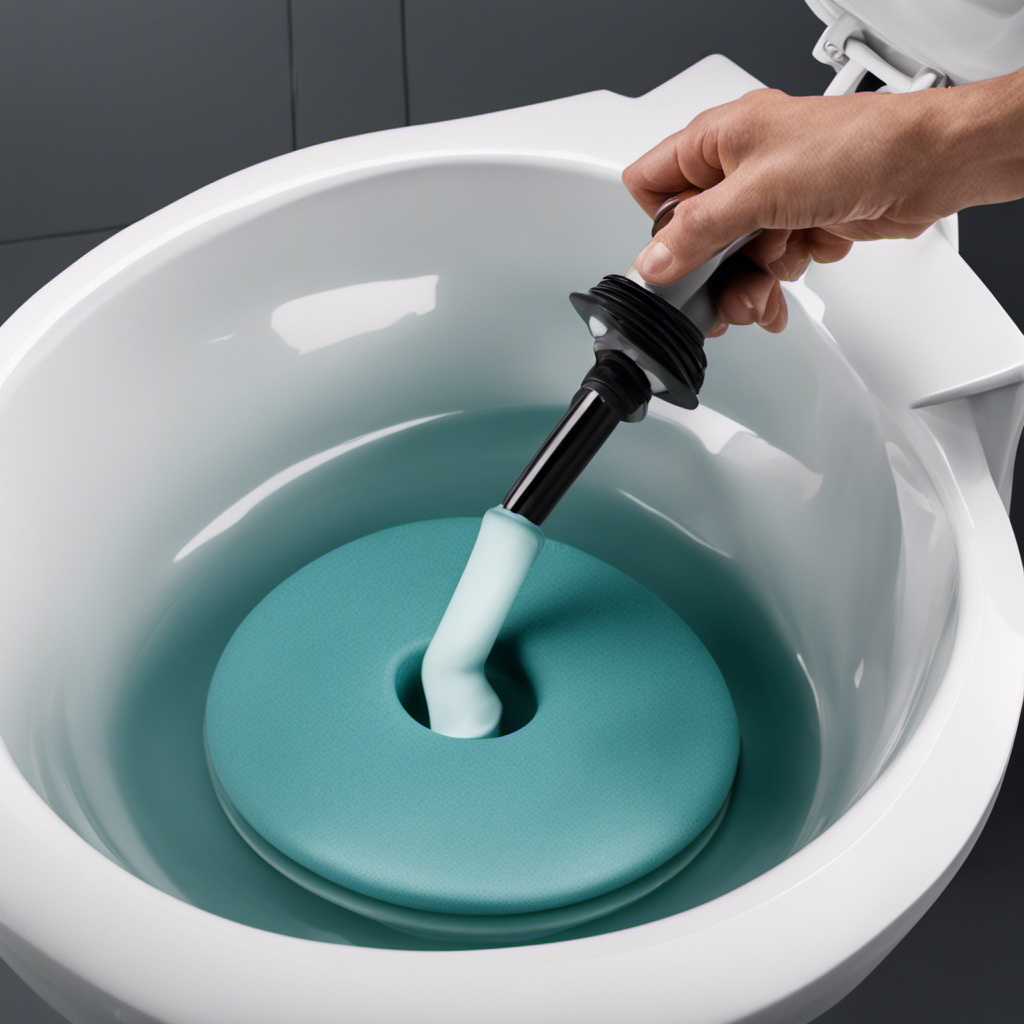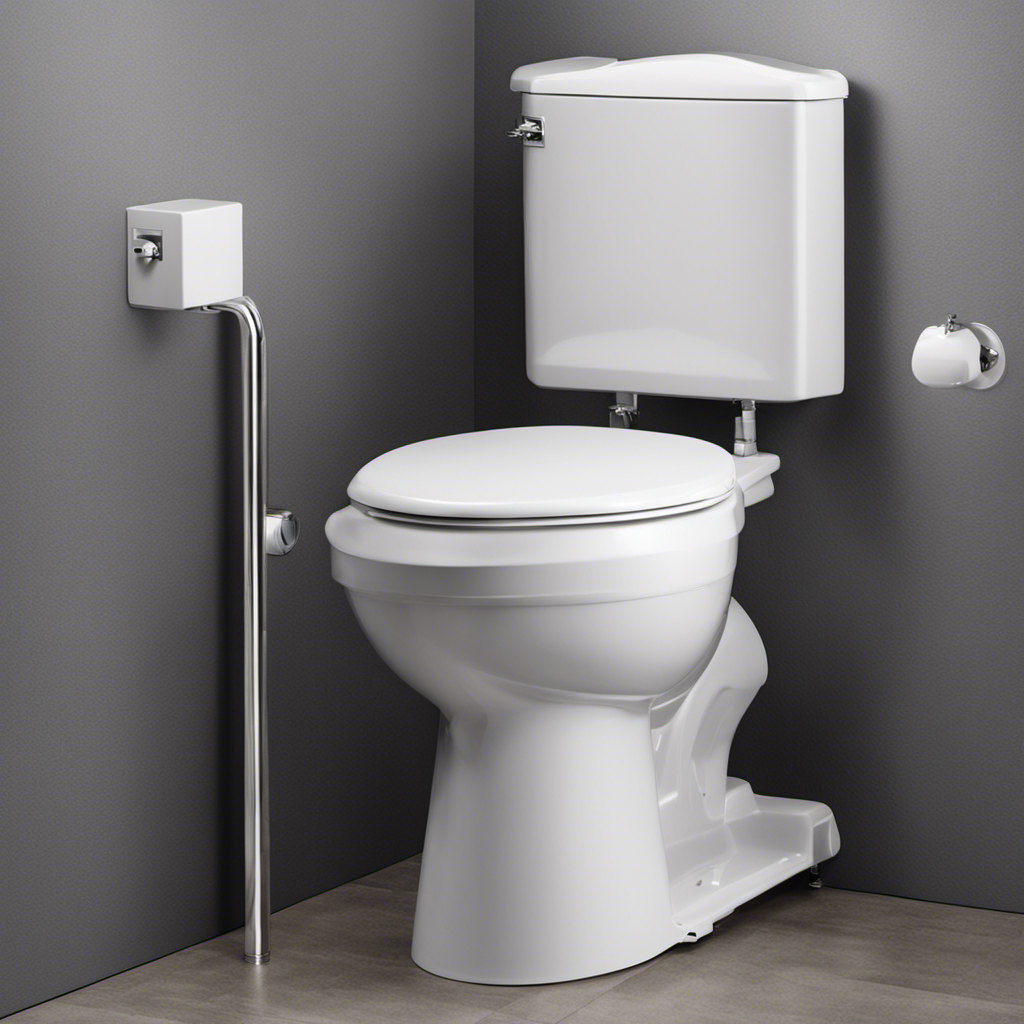I’ve been there – that sinking feeling when you realize your toilet is blocked. But fear not! I’m here to guide you through the process of unclogging your toilet.
With a few tools and a little know-how, you’ll have your toilet up and running in no time.
In this article, I’ll walk you through the common causes of toilet blockages, the tools you’ll need, and a step-by-step guide to clearing the blockage.
So let’s dive in and get that toilet flowing smoothly again!
Key Takeaways
- Flushing excessive amounts of toilet paper can easily clog the pipes.
- Wet wipes, feminine hygiene products, and paper towels are not designed to break down easily and can cause serious blockages.
- Using a plunger and hot water is the most common and effective method for unclogging a toilet.
- To prevent future blockages, avoid flushing excessive toilet paper or non-flushable items and regularly clean the toilet.
Common Causes of Toilet Blockages
One of the most common causes of toilet blockages is flushing excessive amounts of toilet paper. While it may seem harmless to flush down a large quantity of toilet paper at once, it can easily clog the pipes and result in a blockage.
To prevent toilet blockages, it is important to use toilet paper in moderation and flush it down in small amounts. Additionally, avoid flushing items such as wet wipes, feminine hygiene products, or paper towels, as they are not designed to break down easily and can cause serious blockages.
Signs of a serious toilet blockage include slow-draining water, gurgling sounds, or an overflowing toilet. If you notice any of these signs, it is crucial to address the blockage promptly to prevent further damage.
Tools and Materials Needed for Unclogging a Toilet
You’ll need a plunger and a bucket of hot water to effectively unclog a toilet. Here are the tools and materials you’ll need to get the job done:
-
Plunger: This is the most essential tool for unclogging a toilet. Make sure it has a rubber suction cup that fits securely over the drain opening.
-
Bucket of hot water: Hot water can help break down the clog and make it easier to plunge. Fill a bucket with hot water (not boiling) and pour it into the toilet bowl before you start plunging.
-
Optional: Chemical drain cleaners: If the clog is stubborn, you may consider using a chemical drain cleaner. However, be cautious as these can be harsh on your pipes and should only be used as a last resort.
With these tools in hand, you’ll be ready to tackle the task of unclogging your toilet. Now, let’s move on to the step-by-step guide to clearing a blocked toilet.
Step-by-Step Guide to Clearing a Blocked Toilet
To start, grab the plunger and position it over the drain opening. Make sure the plunger creates a tight seal around the drain. Then, push and pull the plunger vigorously to create suction and dislodge the blockage.
If the plunger doesn’t work, try using a toilet auger. Insert the auger into the toilet bowl and crank the handle clockwise to break up the blockage.
Another DIY technique is using a mixture of baking soda and vinegar. Pour half a cup of baking soda into the toilet bowl, followed by a cup of vinegar. Let the mixture sit for about 30 minutes, then flush the toilet.
To prevent future toilet blockages, avoid flushing excessive toilet paper or non-flushable items. Regularly clean the toilet and avoid pouring grease or oil down the drain.
Alternative Methods for Unclogging a Toilet
If the plunger doesn’t work, try using a toilet auger to break up the blockage. This handy tool is designed specifically for unclogging toilets and can be a great alternative when the plunger fails. Here are three steps to effectively use a toilet auger:
-
Insert the auger into the toilet bowl, making sure the rubber sleeve is inside the drain hole.
-
Rotate the handle clockwise while applying downward pressure. This will help the auger move through the clog and break it up.
-
Once you feel the resistance lessen, pull the auger out carefully. Flush the toilet to check if the blockage has been cleared.
If the toilet auger doesn’t do the trick, you can consider using chemical solutions specifically formulated for unclogging toilets. These chemicals can dissolve the blockage and clear the toilet drain effectively. Remember to always follow the manufacturer’s instructions and use protective gloves when handling chemical solutions.
Tips for Preventing Future Toilet Blockages
One way to avoid future toilet blockages is by being mindful of what you flush down the drain. Proper toilet maintenance is essential for preventing clogs.
Firstly, make sure to use toilet paper that is septic-safe and easily dissolvable. Avoid flushing items like wipes, feminine hygiene products, or cotton balls, as they can easily cause blockages. Additionally, be cautious with excessive toilet paper usage, as it can also lead to clogs.
Regularly inspecting your toilet for any signs of leaks or cracks is crucial in preventing future blockages. Lastly, consider using eco-friendly toilet cleaning solutions. These solutions are not only better for the environment, but they also help in preventing build-up and reducing the chances of clogs.
Conclusion
As I wrap up this guide on how to clear a blocked toilet, I hope you have found the information helpful and practical.
Remember, it’s important to have the right tools and materials on hand and to follow the step-by-step process carefully.
But if you’re still feeling unsure or hesitant about tackling this task on your own, don’t worry. You can always call a professional plumber to help you out.
By following these instructions, you’ll be able to successfully clear a blocked toilet and save yourself from unnecessary stress and expenses.
So go ahead, give it a try and enjoy the satisfaction of a job well done!










